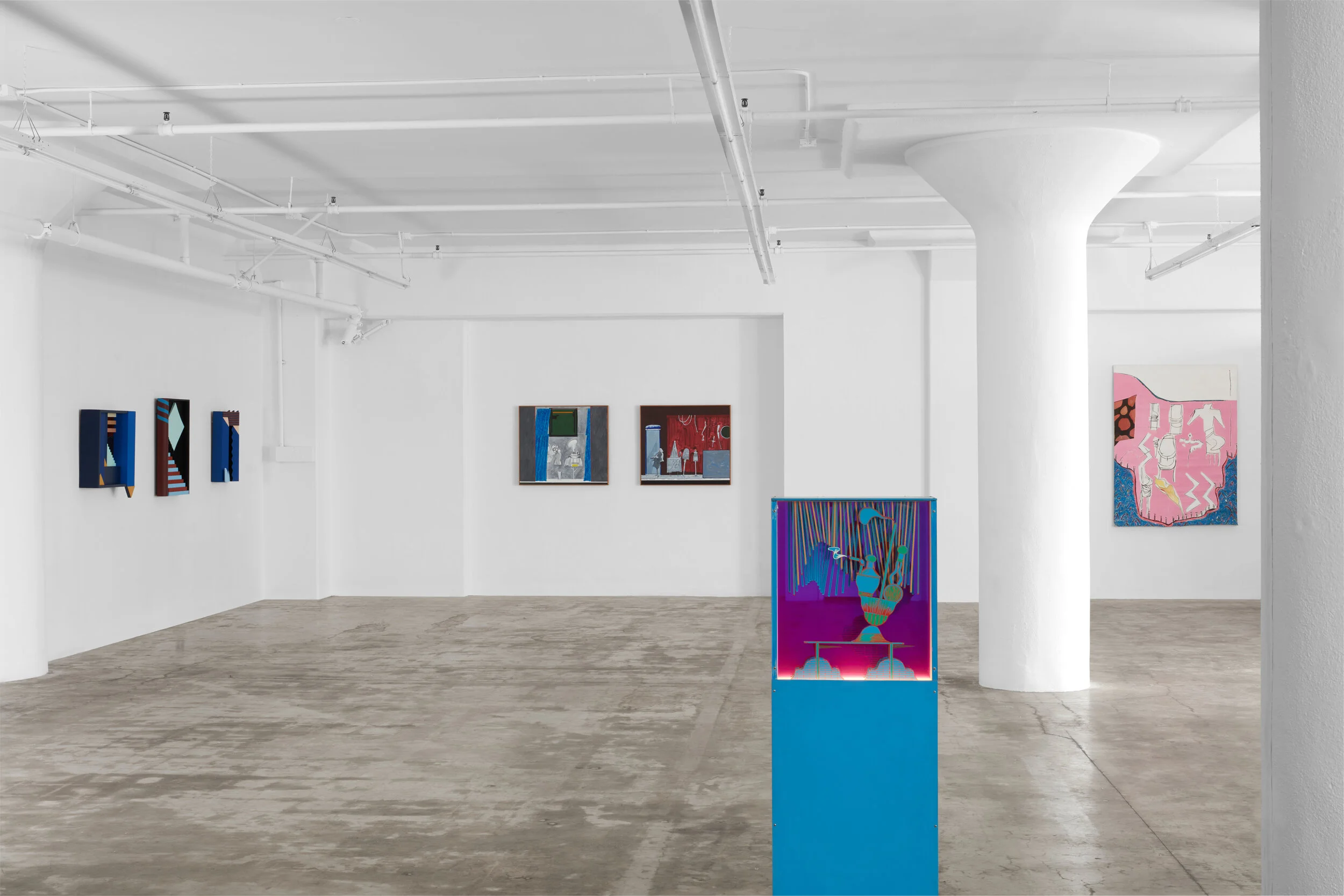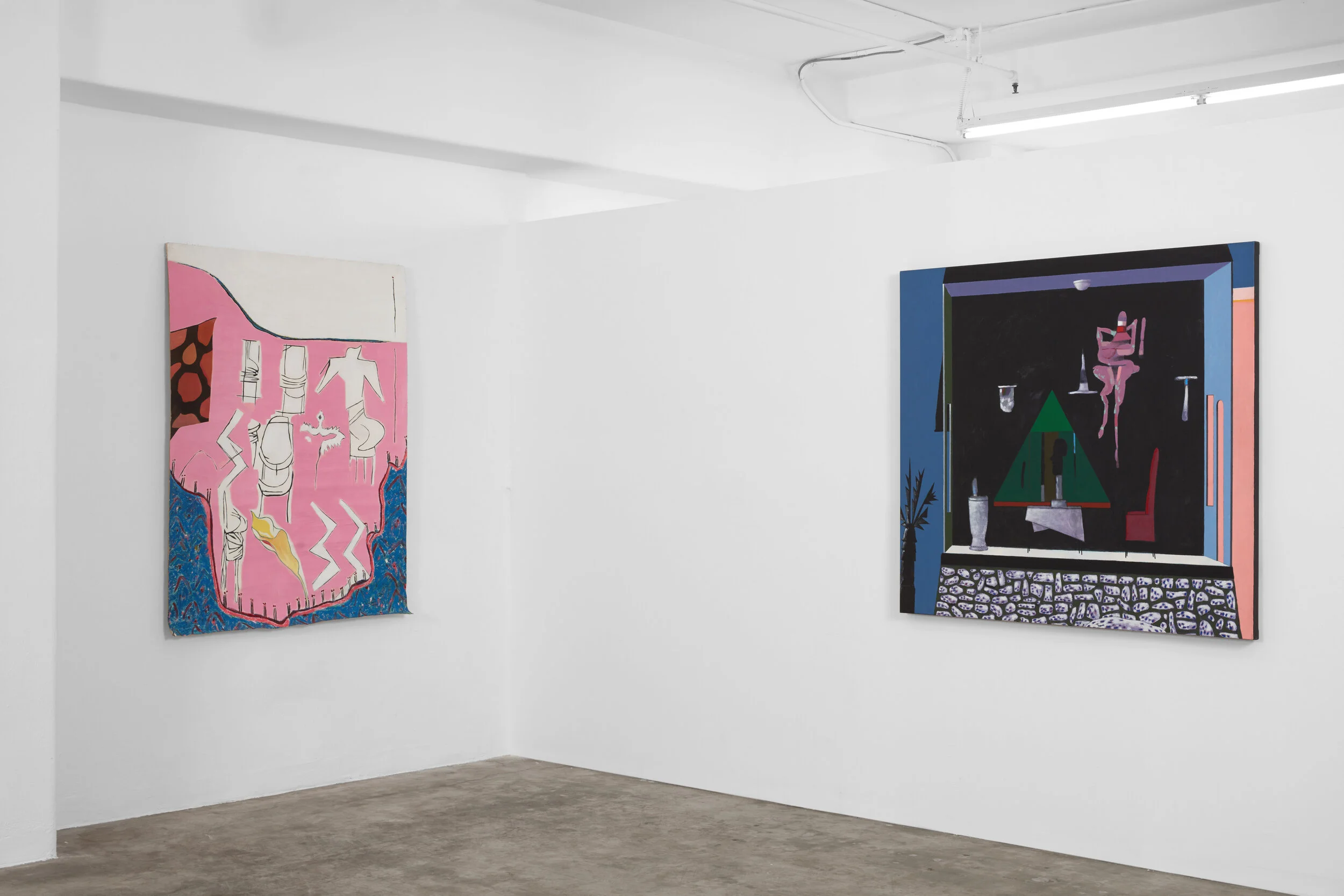Per Proscenia
JOAN | Los Angeles | May 13 – June 24, 2018
Review in Frieze by Jonathan Griffin
From the press release:
Within a renewed critical interest in painterly techniques that emerged in Southern California starting in the 1970s, the work of these three artists reveals an attention to the construction of spaces and surfaces to investigate and make visible acts of staging. While their vibrant visual fields question conceptual and material boundaries between painting, sculpture, collage, and drawing, their combinatory uses of two- and three-dimensional forms playfully gesture to a theatricality inherent in experiences of directed viewership.
Askin subscribes to a notion of “deep time” wherein art historical chronologies are commensurate not with movements or schools, but with the capricious flux of an ever-expanding cultural repertoire. His scenes revel in tropes plucked from histories of art, literature, and theater, but only to remain in service to canny juxtapositions of figures, artifacts, and archetypes. These worlds are unabashedly staged and curiously plotted. He positions his subjects within delineated spaces, but allows slippages between overall cohesion and fragmentation.
Bain’s tableaux originated in her study of nighttime landscapes outside her Downtown Los Angeles studio. Her arrangements merge signifiers of set and stage with those of architecture and the natural world, demonstrating how readily urban panoramas of the 1980s lent themselves to deconstruction. Angular geometries evoke Constructivist forms of the early 20th century whose frameworks have been dislocated or rearranged. As horizon lines transform into stage curtain hems, the planar becomes performative, vista becomes theater, and the dark density of a nocturnal metropolis becomes a pastiche of built surfaces and facades. Bain’s spaces announce themselves as stages—always to be looked at, never acted upon.
Vista experiments with figure/ground relationships by adjoining two-dimensional painted patterns. Biomorphic and abstracted forms animate one another, symbiotically mapping the viewer’s gaze across unstretched canvases. Vista adopts many of her techniques from the predominantly feminist Pattern and Decoration movement of the 1970s/80s, whose adherents reimagined patterns of international textiles and decorative arts, positing them as distinct from, yet on par with, western modernism’s “purist” forms. Vista, however, elides full renunciation of modernist vernaculars. She instead merges them with representational and volumetric flourishes, achieving an idiosyncratic “staging of the surface.”
Public programs included a conversation between artist Sandra Vista and Jeanne Dreskin, moderated by Anna Katz (Curator, LA MOCA), as well as an exhibition walkthrough with artist Elizabeth Bain.
Photos by Paul Salveson







